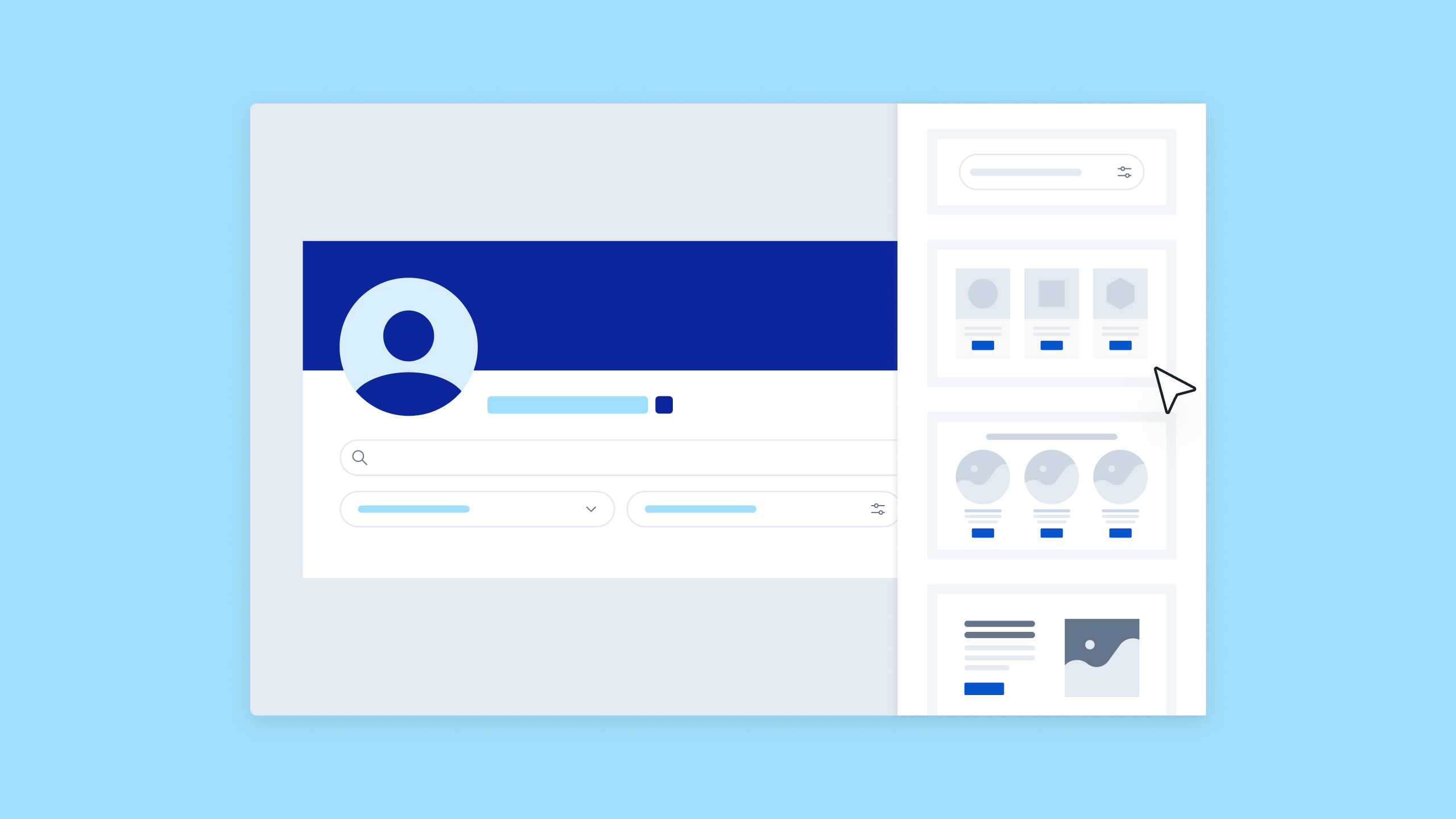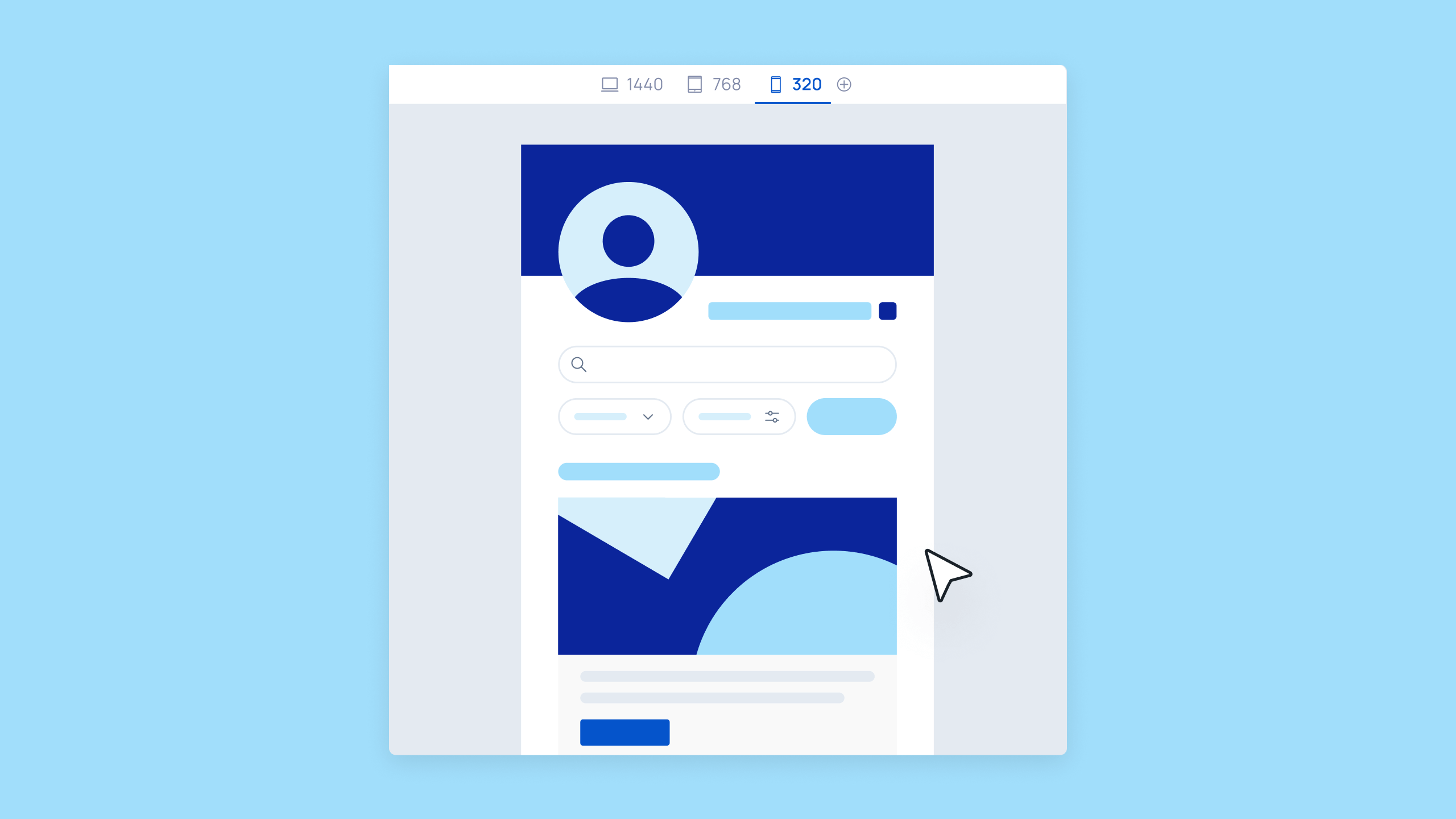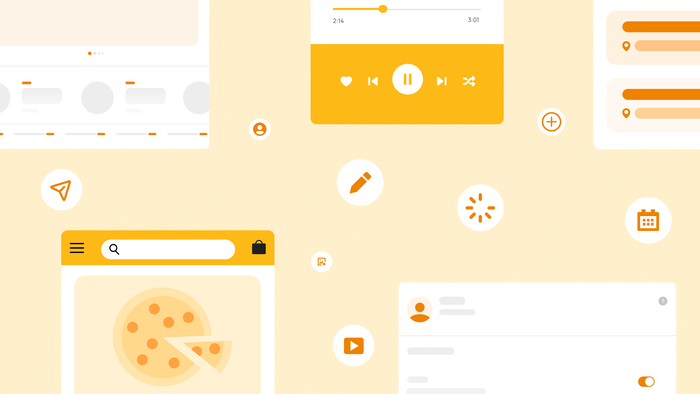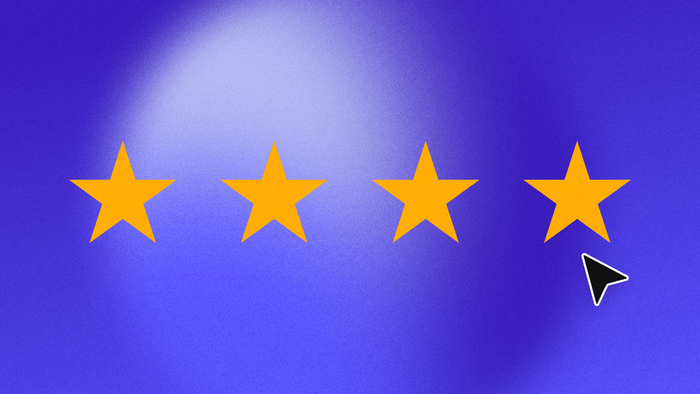When you’ve got big ideas for your business, it can be tempting to move fast and just start building something on the first website builder you find. After all, everyone needs a website! Or, wait … is it actually a web app that you need?
Most of us refer to anything that has a URL as a website, but many “sites” are really web apps — and the difference between them can be pretty significant for your business. In this article, we’ll show you what exactly a web app is, and what the benefits are compared to a basic website. In general, web apps are way more powerful than a simple website. But you don’t have to take our word for it — we’ll show you what we mean.
What is a web app?
Since there are a lot of different terms that get thrown around related to websites and apps, let’s start with some definitions so we’re all on the same page.
Sam Morgan, one of our internal Bubble Developers, sums it up this way:
“A web app is an interactive piece of software that runs in your browser.”
Unlike licensed software or a mobile app that's downloaded directly to your device, you access a web app through a browser. This allows anyone with an internet connection to access interactive software. With a web app, you don’t just interact with what’s already on the website: you can add your own data or content, run workflows, interact with content from other users, and more.
Common web apps are Gmail, Facebook, Quora, or Airbnb. A web app can also be an online version of a downloadable software, such as Quickbooks or Notion.
What is a web app vs. a responsive website?
Web apps and websites can both be responsive. Responsive web design refers to the way the site or app looks on a variety of device sizes, not the interactiveness of the page or the software.
You can think of responsive websites as the marketing pages created to describe a product or web app. Web apps are interactive tools created to solve a particular problem.
Of course, there are other differences between web apps vs. responsive websites. Here’s a handy chart:
What are the benefits of web apps?
The benefits of web apps are massive — especially if you’re a scrappy startup with big product ideas. The ability to create custom, interactive software with a web app opens up exponential possibilities for your product that a website can’t support.
Bubble Developer Maria Posa summed up the power of web apps:
“The benefits of web apps are really boundless. The ability to store and manipulate data and automate functionality is what powers the software that we use every day, which is truly the core of what web apps are. Buying and selling in a marketplace (like Etsy), connecting with friends in social networks (like Facebook), and keeping track of customer data (like Salesforce) are all great examples of web apps.”
Here’s how some of these benefits show up in web apps.
Web apps create solutions, not static pages
If you have an idea for a cool product or solution you’d like to offer someone — whether it’s your family, your neighborhood, or the world — a web app allows you to create the software that powers that solution. Creating a website can allow you to sell a product or offer information, but only as a static page.
Andrew Vernon, Senior Bubble Developer, put it this way:
“Most (if not all) people have, at some point, thought of creating a web app or have had a problem float through their mind and thought of some solution. It happens more than you might think. There are far more instances where the idea to create an app has sprung up than we may realize — i.e. making a tool to better track youth softball team registration and organization, creating a database of all local lemonade stands in your area to organize a summer lemonade crawl, or even creating your own simplified version of Facebook for your family to stay up-to-date. Web apps give everyday people the ability to solve a problem for themselves or others in an easy-to-use, and easy-to-distribute way.”
A website builder like Squarespace or Wix allows you to talk about your idea and share it with others, but it doesn’t give you the tools you need to enable logins and user accounts, create interactive databases, or allow your app to respond to user actions or database changes.
Even better: with the no-code movement taking off, anyone can use tools like Bubble to create functional and beautiful web apps that solve problems for yourself, your audience, and your community. Whether you’re looking to build a social network, a marketplace, a management or personal finance tool — the possibilities for apps and tools you can build with no-code are just about endless. You don’t even need a background in programming to make it happen!

Web apps can be responsive and work on any device
Web apps aren’t just for desktop web browsers. Like a responsive website, web apps can also be responsive, allowing them to work perfectly and look great on any device or screen size. This allows your web app to be accessible to anyone with an internet connection!
With Bubble, creating a responsive web app is pretty simple. Set custom breakpoints to make your Bubble app responsive for varying screen sizes, or use pre-built breakpoints to keep things clean and aligned. Three basic container layouts — a column, a row, or align to parent — let you drag and drop elements that align automatically and respond to any screen size.

Web apps are more universal than native apps
If you’re ready to build software anyone can use, a web app is an easily accessible solution. Native mobile apps adhere to specific platform and operating system (OS) requirements, while web applications can be used on all modern browsers. That also means they’re easier to maintain. Instead of building several different versions of your app with platform-native languages, your web app is built in a common language that works across multiple platforms and devices.
A web app can also be used as the foundation for mobile apps — an easy way to accomplish more with less and offer more options to your users. For example, Airbnb users can either use their web app or download their native mobile app to use the platform directly on their mobile devices.
When building a web app on Bubble, you can list your web app on mobile app stores using a wrapper. A wrapper is an easy way to conform your web app to the technical standards for a native app. It also allows you to sell your app in the App Store so users can download it directly to their device. It also lets you provide a slick user interface and add functionality like push notifications.
Web apps require less time and fewer resources to build compared to native mobile apps
Even if you know you want to make your app available for download someday, creating a web app offers a much faster development timeline compared to building a native app. Since web apps aren’t tied to a specific platform, you’ll need fewer development resources and a shorter timeframe to get it up and running. Even better: today’s no-code tools make it much easier to design a web app without advanced programming or coding knowledge, making them a much lower-cost solution.
With Bubble, you can also connect with our ecosystem of resources, tutorials, and templates to make building a custom web app even faster. Instead of hiring an entire dev team to build and maintain your mobile app, you can keep things simple and get to market faster with Bubble’s low-lift drag-and-drop editor.
Web apps allow you to increase functionality with databases
One of the biggest things that differentiates web apps from websites is the ability to use databases to increase functionality. For example:
- A social networking app might have data types like user, post, and interest.
- A project management app might have data types like user, project, and task.
These data types will have additional custom fields and can be connected to each other through linked fields. For example, on a social network, the data type post would have a created by field that links it to the user.
On Bubble, our drag-and-drop editor makes it easy to create and modify databases — and allow your end-users to edit their info via your app’s interface. You can even have your app “listen” for changes to that information in the database and initiate workflows based on them using database triggers (for example, sending a confirmation email). That way, databases do more than just store data.
Database triggers are a remarkable feature…
- …allowing new users to sign up for your software
- …which triggers workflows based on certain user actions or conditions
- …that connect users to different types of types of data
- …which creates search functionality on your site for users, content, and more
- …so they can create their own databases and visualize, edit, and manipulate personal data.
Web apps allow you to serve a wider audience
The question of building a website or web app is also one of scale. Do you want to reach a specific and limited audience, or do you want to be able to scale your audience to a large user base?
As Senior Bubble Developer Andrew Vernon explains,
“For founders and developers, it's the difference between being able to build a site for one company and their users, or to build software that could serve many companies and ALL of their users. For instance, a real estate website might allow one company to post their home listings and take requests about those listings. Whereas a real estate web app (like Zillow) might allow thousands of companies to post all of their home listings, along with information about their business, and to dynamically take requests about any of those listings. The opportunities and results of the dynamic systems that come from web apps provide a massive opportunity to serve a much larger user base.”
Building a web app on Bubble allows you to create software that can grow with you to serve a wide user base. You can launch your app on Bubble with custom domain hosting, with plans starting at as little as $29 per month. As your userbase grows, Bubble makes sure you have the security, servers, and support you need to sustain your growing business.
Which is better: web apps or responsive websites?
There’s no one right answer here! The best solution for you depends on your business goals and use cases.
The short answer: If you’re providing your end users with a static web experience, then a website might be all you need.
However, if you want to provide interactive software that creates a solution to your end-users’ needs and problems, a web app is the best way to deliver that software. If you’re still not sure, this comparison chart should help you decide:
Get started building your web app today
With Bubble, building a web app is easier than ever. If you can dream it, you can build it with no-code on Bubble.
Ready to join the no-code movement? Register your free account and get started today.
If you’d like additional help or support when building your product, our thriving community forum is a great place to source actionable advice and resources. Anyone is encouraged to ask questions within the community to help their no-code journey.
Build your app on Bubble's Free plan. No need to upgrade until you're ready to launch your app.
Join Bubble




